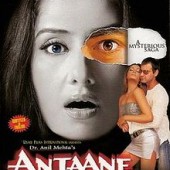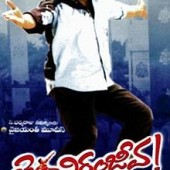Set up in British Raj, after a political disagreement with Mahatma Gandhi, Boses arrest and subsequent release sets the scene for his escape to Germany, via Afghanistan and the Soviet Union. A few days before his escape, he sought solitude and, on this pretext, avoided meeting British guards and grew a beard on the night of his escape. He dresses himself as a Pathan to avoid being identified. Bose escapes from under British surveillance at his house in Calcutta on 19 January 1941, accompanied by his nephew Sisir K. Bose in a car.
Bose journeys to Peshawar with the help of the Abwehr, where he was met by Akbar Shah, Mohammed Shah and Bhagat Ram Talwar. Bose was taken to the home of Abad Khan, a trusted friend of Akbar Shahs. On 26 January 1941, Bose begins his journey to reach Russia through British Indias North West frontier with Afghanistan. For this reason, he enlists the help of Mian Akbar Shah, then a Forward Bloc leader in the North-West Frontier Province. Shah had been out of India en route to the Soviet Union, and suggests a novel disguise for Bose to assume.
Since Bose could not speak one word of Pashto, it would make him an easy target of Pashto speakers working for the British. For this reason, Shah suggests that Bose act deaf and dumb, and let his beard grow to mimic those of the tribesmen. Boses guide Bhagat Ram Talwar, unknown to him, is actually a Soviet agent.Supporters of the Aga Khan III help Bose across the border into Afghanistan where he was met by an Abwehr unit posing as a party of road construction engineers from the Organization Todt who then aided his passage across Afghanistan via Kabul to the border with Soviet Russia. After assuming the guise of a Pashtun insurance agent (Ziaudddin) to reach Afghanistan, Bose changes his guise and travels to Moscow on the Italian passport of an Italian nobleman Count Orlando Mazzotta.
From Moscow, he reached Rome, and from there he travels to Germany. Once in Russia the NKVD transport Bose to Moscow where he hope that Russias traditional enmity to British rule in India would result in support for his plans for a popular rising in India. However, Bose found the Soviets response disappointing and was rapidly passed over to the German Ambassador in Moscow, Count von der Schulenburg. He had Bose flown on to Berlin in a special courier aircraft at the beginning of April where he was to receive a more favorable hearing from Joachim von Ribbentrop and the Foreign Ministry officials at the Wilhelmstrasse.In Germany, Bose is attached to the Special Bureau for India under Adam von Trott zu Solz which was responsible for broadcasting on the German-sponsored Azad Hind Radio.
Bose initiates the Free India Center in Berlin, and created the Indian Legion (consisting of some 4500 soldiers) out of Indian prisoners of war who had previously fought for the British in North Africa prior to their capture by Axis forces. The Indian Legion is attached to the Wehrmacht, and later transferred to the Waffen SS.Its members swore the following allegiance to Hitler and Bose: I swear by God this holy oath that I will obey the leader of the German race and state, Adolf Hitler, as the commander of the German armed forces in the fight for India, whose leader is Subhas Chandra Bose. This oath clearly abrogates control of the Indian legion to the German armed forces whilst stating Boses overall leadership of India. He was also, however, prepared to envisage an invasion of India via the USSR by Nazi troops, spearheaded by the Azad Hind Legion; many question his judgment here, as it seems unlikely that the Germans could have been easily persuaded to leave after such an invasion, which might also have resulted in an Axis victory in the War.
In all, 3,000 Indian prisoners of war sign up for the Free India Legion. But instead of being delighted, Bose was worried. A left-wing admirer of Russia, he was devastated when Hitlers tanks rolled across the Soviet border. Matters were worsened by the fact that the now-retreating German army would be in no position to offer him help in driving the British from India. When he meets Hitler in May 1942, his suspicions were confirmed, and he comes to believe that the Nazi leader was more interested in using his men to win propaganda victories than military ones.
So, in February 1943, Bose turned his back on his legionnaires and slipped secretly away aboard a submarine bound for Japan. This leaves the men he had recruited leaderless and demoralized in Germany.Bose lives in Berlin from 1941 until 1943. During his earlier visit to Germany in 1934, he had met Emilie Schenkl, the daughter of an Austrian veterinarian whom he marries in 1937. Their daughter is Anita Bose Pfaff.
In 1943, after being disillusioned that Germany could be of any help in gaining Indias independence, he leaves for Japan. He travels with the German submarine U-180 around the Cape of Good Hope to the southeast of Madagascar, where he is transferred to the I-29 for the rest of the journey to Imperial Japan, The INAs first commitment was in the Japanese thrust towards Eastern Indian frontiers of Manipur. INAs special forces, the Bahadur Group, are extensively involved in operations behind enemy lines both during the diversionary attacks in Arakan, as well as the Japanese thrust towards Imphal and Kohima, along with the Burmese National Army led by Ba Maw and Aung San.However, the Japanese Navy remains in essential control of the islands administration. On the Indian mainland, an Indian Tricolor, modeled after that of the Indian National Congress, was raised for the first time in the town in Moirang, in Manipur, in north-eastern India.
The towns of Kohima and Imphal were placed under siege by divisions of the Japanese, Burmese National Army and the Gandhi and Nehru Brigades of INA during the attempted invasion of India, also known as Operation U-GO. However, Commonwealth forces held both positions and then counter-attack, in the process inflicting serious losses on the besieging forces, which were then forced to retreat back into Burma.When the Japanese were defeated at the battles of Kohima and Imphal, the Provisional Governments aim of establishing a base in mainland India was lost forever. The INA was forced to pull back, along with the retreating Japanese army, and fought in key battles against the British Indian Army in its Burma campaign, notable in Meiktilla, Mandalay, Pegu, Nyangyu and Mount Popa. However, with the fall of Rangoon, Boses government ceases to be an effective political entity.
A large proportion of the INA troops surrenders under Lt Col Loganathan. The remaining troops retreated with Bose towards Malaya or made for Thailand. Japans surrender at the end of the war also leads to the eventual surrender of the Indian National Army, when the troops of the British Indian Army were repatriated to India. On 17 August 1945, Bose leaves from Saigon to Tourane, French Indo-China in the Mitsubishi Ki-21 twin-engine heavy bomber. Subsequently, on 23 August 1945, Reuters announces the death of Bose and General Tsunamasa Shidei of the Japanese Kwantung Army in Japanese-occupied Manchuria.
The film ends with the trial of INA war heroes at Red Fort, Indian Navy rebellion, and the resulting Indian Independence in 1947.
Director :
Shyam Benegal
Cast :
Sachin Khedekar, Kulbhushan Kharbanda, Rajit Kapur, Arif Zakaria, Divya Dutta
Genre :
Producer :
Raj Pius
Barbara von Wrangell
Release Date :
2005-11-03
Running Time :
222 minutes
Music :
A. R. Rahman











RIDDHIMAA
Howrah Bridge Pe Latakti Hui Lash
sharan
Movie Review: AE DIL HAI MUSHKIL (2016) - Bollywood's First Platonic Love Story
Sharad
Commando 2
amol
Force 2
Ultimate Free Lyrics
Rustom